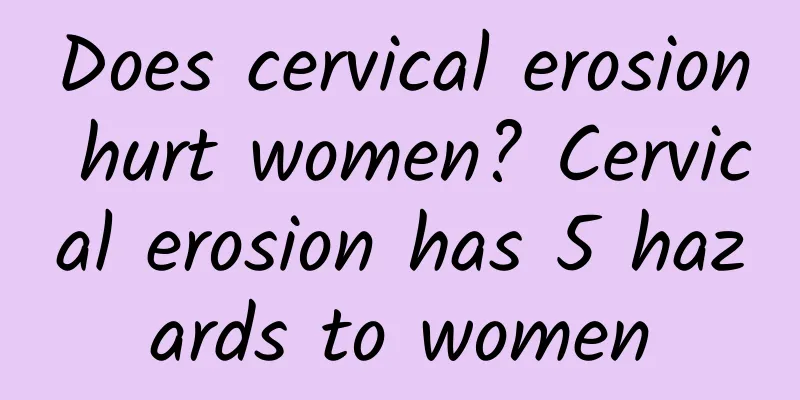Can I have IVF if I have intrauterine adhesions? Do a hysteroscopy first to make the decision

|
Whether intrauterine adhesions can be used for IVF needs to be determined by hysteroscopy. If the conditions for IVF are met after the surgery for intrauterine adhesions, multiple tests such as 6 items of sex hormones, vaginal secretions, and ovulation are required. Only when all the conditions are met can IVF be used. When the myofibrium of the endometrium is damaged, intrauterine adhesions may occur. At this time, the patient will have abnormal menstruation, and often have problems such as repeated miscarriages and infertility. With the increasing maturity of IVF technology, it has solved the problems of many infertile couples. Some patients with intrauterine adhesions who have not been pregnant for many years also want to try this method. So, can patients with intrauterine adhesions do IVF? |
<<: How to self-check uterine cavity adhesion? First look at the high-risk groups
>>: Can B-ultrasound show intrauterine adhesions? Generally not.
Recommend
How to take care of chocolate cysts?
Chocolate cyst is one of the gynecological diseas...
What details should be paid attention to in the care of cervicitis
One of the most common gynecological diseases is ...
What are the principles of prevention of adnexitis?
With the development of society, the number of pa...
Apple has many wonderful uses! Eating well and exercising can help you lose weight
Apple Exercises promotes the subversive concept o...
Lose 25 kg in 1 year! Diabetes doctors strongly recommend low-sugar lunch boxes, 5 tips to lose weight
People who are too obese are prone to diabetes, a...
He ate snacks as regular meals, and his weight soared to over 13 kilograms in more than a year, and he developed fatty liver!
If you eat snacks as meals, be careful of weight ...
Let's learn about the preventive measures for cervical hypertrophy
The prevention methods of cervical hypertrophy is...
You get hungry quickly in winter! Nutritionists recommend 3 afternoon teas that won’t make you fat
I’m so hungry~ In winter, the appetite is strong,...
What are the dangers of being diagnosed with cervicitis? What should women pay attention to when they suffer from cervicitis?
Nowadays, cervicitis is no longer a strange gynec...
I haven't had my period for half a year. Is this menopause?
If you haven't had your period for half a yea...
Watch HSD weight loss dance by famous choreographer Xie Jinyan
Electronic music queen Xie Jinyan's ever-chan...
How to deal with vaginal itching? 5 ways to deal with vaginal itching
Women should pay attention to their own health an...
There is something wrong with Australia and New Zealand cattle! Lin Jieliang: Labeling the origin of food to build a food resume
On the afternoon of the 12th, the Department of H...
The harm of bacterial vaginosis to the body
Bacterial vaginosis is an inflammation of the vag...
How to carry out postoperative care for congenital absence of vagina
How to provide postoperative care for congenital ...









